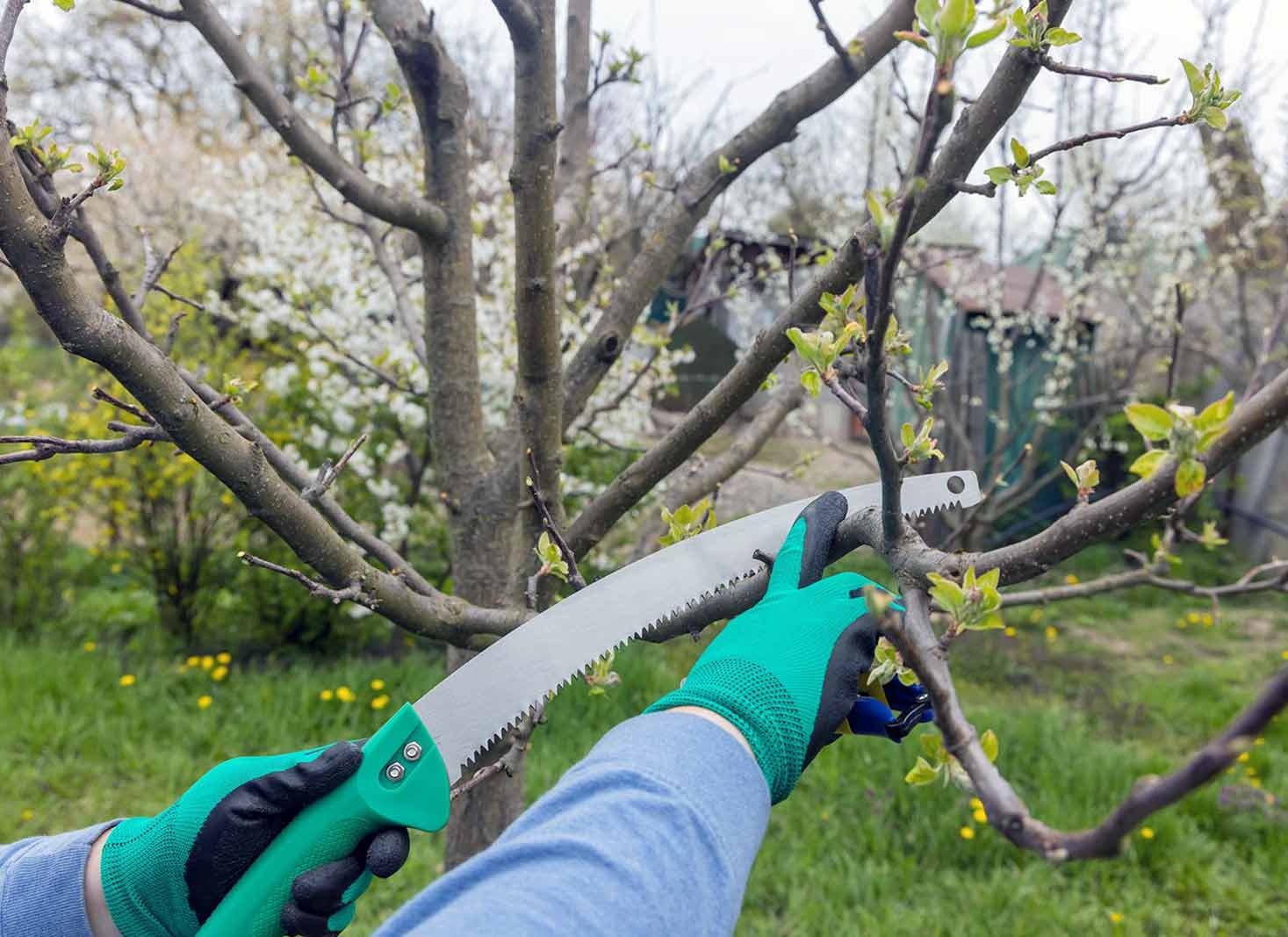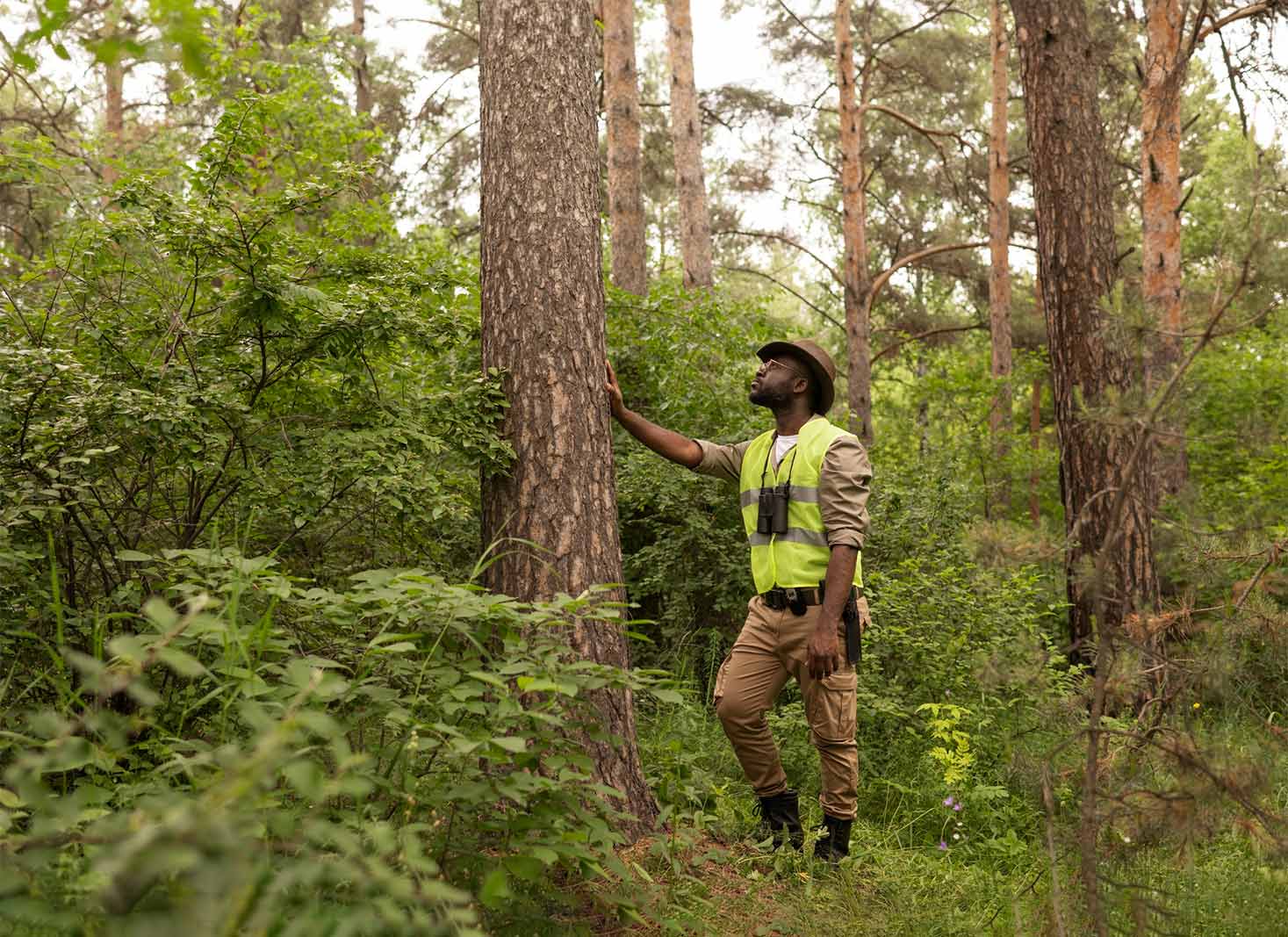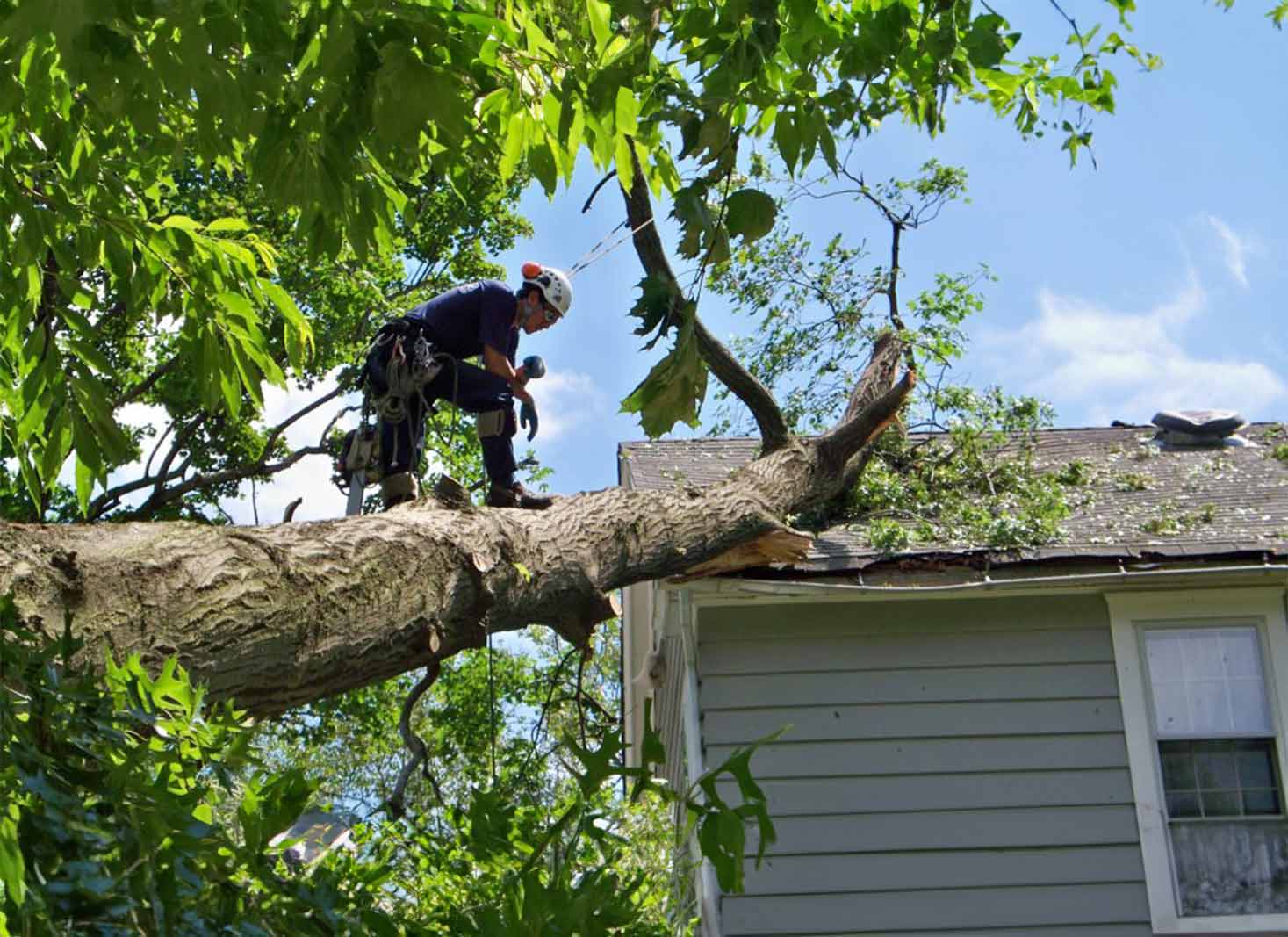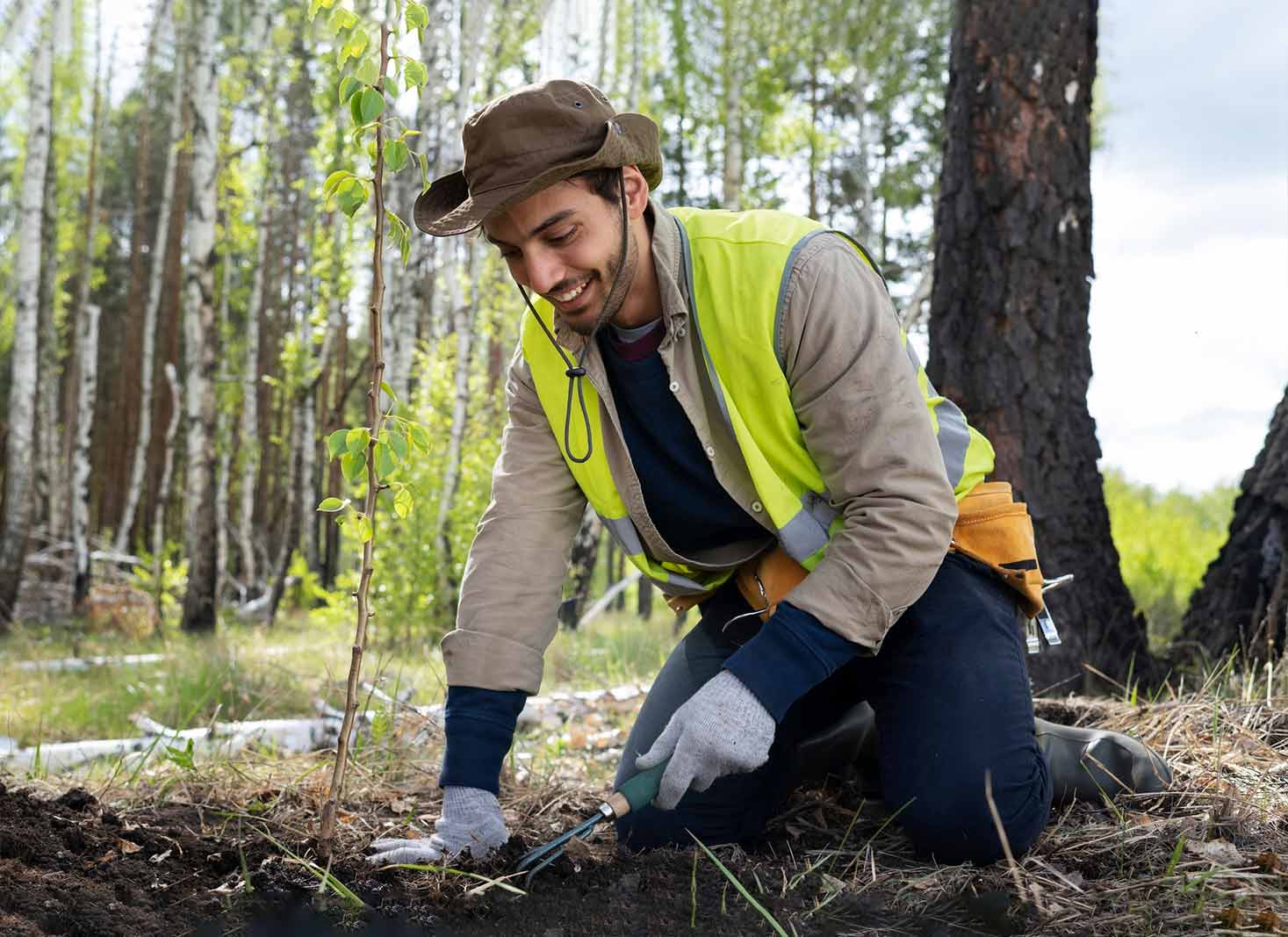Storms have the potential to severely damage trees, leading to property destruction and possible dangers around your home. However, did you realize that with the right preparations, your trees can withstand harsh weather conditions better?
Preparing trees for storms and protecting your property involves a combination of proactive measures, such as pruning, securing young trees, maintaining tree health, planting strategically, and creating windbreaks.
By taking these steps, you can minimize the risk of damage during storm season and keep your trees and property safe, no matter what Mother Nature has in store.
What we cover
ToggleSteps for preparing trees for storms

Preparing trees for storms is essential to minimize potential harm and ensure they stand strong during severe weather. Proper pruning, securing young trees, and maintaining overall tree health are crucial steps to reduce risks.
Pruning trees for wind resistance is particularly important during hurricane season. By taking the following steps, you can help make your trees more wind-resistant and less likely to suffer damage.
- Remove weak branches.
- Ensure proper branch angles.
- Secure young trees with proper planting and staking techniques.
- Maintain tree health through regular watering, fertilization, and pest control.
By following these practices, you can help keep your trees strong and resilient in the face of high winds.
Pruning trees for wind resistance
Pruning trees for wind resistance involves crown thinning, removing weak or dead branches, and encouraging proper branch angles to allow wind to pass through them more easily.
This strategic pruning process can significantly increase trees’ wind resistance, reducing the risk of damage to both trees and homes during storms.
When having your trees pruned, aim to:
- Encourage branches extending upward at 30- to 45-degree angles
- Remove branches that are too large to support beyond the trunk
- Ensure branches do not exceed a diameter of 50 to 75 percent of the trunk
Too many branches may weaken the trunk’s support and structure.
If you’re unsure about the pruning requirements or unable to prune a large tree yourself, it’s advisable to call a certified arborist for assistance.
Securing young trees
Securing young trees is crucial to ensuring their stability during storms.
Proper planting, which involves planting the tree at the appropriate depth, in suitable soil, and with adequate space for root expansion, is the first step in securing a young tree.
To provide additional support, it’s recommended to stake young trees. Here’s how:
- Drive one or two parallel stakes (wood or metal) a foot away from the trunk.
- Use a soft material, such as canvas or tree staking straps, to attach the stakes to the tree.
- Remember to leave some slack to allow the tree to sway, which promotes proper root development.
Maintaining tree health
Maintaining the health of mature trees is essential for them to remain strong and resilient during storms. This involves regular watering, fertilization, and pest control, which ensures the overall strength and durability of the trees.
Healthy trees are more likely to survive minor and moderate injuries during storms and recover more quickly than their less healthy counterparts.
By ensuring proper hydration during periods of drought and providing adequate nutrients through fertilization, you can promote tree health that ultimately reduces the risk of storm damage.
Identifying potential hazards

Before storm season arrives, it’s important to assess potential hazards that could cause severe damage during storms.
This includes evaluating trees near power lines, identifying weak or dead branches, and detecting diseased or pest-infested trees.
By taking proactive measures and identifying these potential hazards, you can address any issues before storms hit, minimizing risks and ensuring the safety of your property.
Remember, a fallen tree during a storm can cause extensive damage and pose a significant threat to your home and neighborhood.
Trees near power lines
Trees near power lines pose a serious risk during storms. High winds can cause branches or even entire trees to fall onto power lines, resulting in outages and potential dangers.
To prevent such catastrophes, it’s essential to evaluate trees near power lines and consider removing them if necessary.
A professional arborist should be consulted to determine if any trees near power lines need to be removed to avoid potentially disastrous consequences.
They can ensure that the trees are removed safely and efficiently, minimizing the risk of damage during storms.
Weak or dead branches
Weak or dead branches can be a significant hazard during storms, as they are more likely to break off and cause property damage or injure people.
It’s essential to identify and remove weak or dead branches before a storm hits, to minimize the risk of damage.
To identify weak or dead branches, look for signs such as flaking or falling bark, brown and dry leaves, and bare branches on one side of the tree.
If you notice any of these signs, it’s important to remove the weak or dead branches as soon as possible, to prevent them from becoming a hazard during a storm.
Diseased or pest-infested trees
Diseased or pest-infested trees are more vulnerable to storm damage, as they are weakened and may not be able to withstand strong winds.
If you suspect that a tree on your property is diseased or infested with pests, it’s important to address the issue before a storm strikes.
Treatment or removal of diseased or pest-infested trees can help prevent further damage and minimize potential hazards during storms.
Consulting with a certified arborist can help determine the best course of action to ensure the health and safety of your trees and property.
Post-storm tree care and recovery

After a storm has passed, it’s crucial to assess any damage to your trees and take the necessary steps for their recovery.
This may involve assessing tree damage, repairing damaged trees, and knowing when to call a certified arborist for assistance.
Taking the time to properly care for your trees after a storm not only helps them recover more quickly but also ensures that they will be better prepared for the next storm.
By being proactive in post-storm tree care, you can minimize the risk of future damage and maintain the beauty and health of your trees.
Assessing tree damage
The first step in post-storm tree care is assessing the damage. Inspect your trees for signs of scarring, limb loss, bark loss, leaning, or any other abnormalities that may have occurred during the storm.
Document the tree’s location, take photos of the damage, and if necessary, consult with a professional arborist to accurately assess the damage and determine the best course of action for tree recovery.
An arborist can help ensure the safe completion of pruning and branch removal, as well as provide expert advice on how to care for your trees going forward.
Repairing damaged trees
Repairing damaged trees may involve uprighting partially uprooted trees, pruning broken branches, and providing support until roots regrow.
For partially uprooted trees, use a rope or cable to pull the tree back into its original position, and stakes to provide extra support.
Prune any broken or damaged branches, ensuring they are cut at least 6 inches away from the trunk. Provide support to the tree, such as stakes or cables, and apply mulch to help protect the roots and encourage regeneration.
When to call a certified arborist
If you’re unsure about the extent of the damage or the best course of action for tree recovery, it’s important to call a certified arborist.
They can help assess the situation, provide expert advice, and ensure the proper steps are taken to care for your trees.
Certified arborists are trained professionals who can handle a variety of tree-related issues, such as:
- pest infestations
- diseases
- damage
- tree emergencies
Don’t hesitate to seek their assistance when dealing with post-storm tree care, as their expertise can help ensure the health and safety of your trees and property.
Protecting your property and home from tree damage

In addition to preparing your trees for storms, it’s important to take steps to protect your property and home from potential tree damage.
This can be achieved by planting strategically, creating windbreaks, and preparing outdoor spaces.
By taking these proactive measures, you can minimize the risk of tree-related damage to your home and property during storms.
Remember, prevention is better than cure, and a little preparation can go a long way in keeping your property safe and secure during storm season.
Planting strategically
Planting strategically involves:
- Choosing tree species that are adapted to your local climate
- Planting them at a safe distance from your home and power lines
- Consider factors such as climate, soil type, and the tree’s eventual size when selecting the appropriate tree for your location.
Educating yourself and engaging with your community can also play a crucial role in ensuring trees are planted in appropriate locations and receive proper care.
By planting trees during their dormant seasons and ensuring they have adequate space to grow, you can help protect your property from potential tree damage during storms.
Creating windbreaks
Creating windbreaks with rows of shrubs, fences, or well-anchored structures can help weaken strong winds and protect trees from damage during storms.
Trees and shrubs with low crowns and dense foliage are most suitable for windbreaks.
The most effective design for a windbreak involves a double row of staggered trees, with up to four rows of trees and shrubs in a garden setting.
Properly designed and planted windbreaks can significantly reduce the impact of strong winds on your property and provide additional protection for your trees.
Preparing outdoor spaces
Preparing outdoor spaces to withstand storms involves securing loose items, trimming hedges and small trees, and ensuring proper drainage.
Secure outdoor furniture, decorations, and other items that could be blown away or damaged during a storm.
Prune hedges and small trees to minimize the potential for damage or uprooting during storms. Additionally, ensure proper drainage around the base of trees to prevent water from pooling around the roots and causing damage.
Taking these steps can help protect your property and minimize potential damage during storm season.
FAQ's
Give trees plenty of space to grow, plant them when they are small, remove tree stakes quickly, and plant trees in groves to help protect them from storm damage.
Additionally, cutting away weak branches and adding flexible steel cables or braces can help support weaker trees.
Cut branches back to the main branch or trunk, avoiding “lion tailing” and removing lower branches.
Shorten overly long branches and remove any cracks, spacing the remaining branches 18-36” apart and ensuring they form an angle of at least 40 degrees with the tree trunk.
Finally, do not cut the root system and dispose of all tree cuttings properly.
Cut weak branches and trees, set up wind barriers, secure pots from shade houses and trees with stakes, take in yard decorations, and secure shed and outbuilding doors to prepare your yard for a storm.
Taking these steps can help protect your property from damage during a storm. Make sure to check your yard regularly for any potential hazards that could be caused by high winds or heavy rain.
Be sure to take the necessary precautions to ensure your safety and the safety of your property.
Create an effective windbreak by using rows of shrubs, fences, or well-anchored structures with trees and shrubs that have low crowns and dense foliage.
These structures can help reduce wind speed and protect plants from wind damage. They can also provide shelter for wildlife and reduce noise levels.



